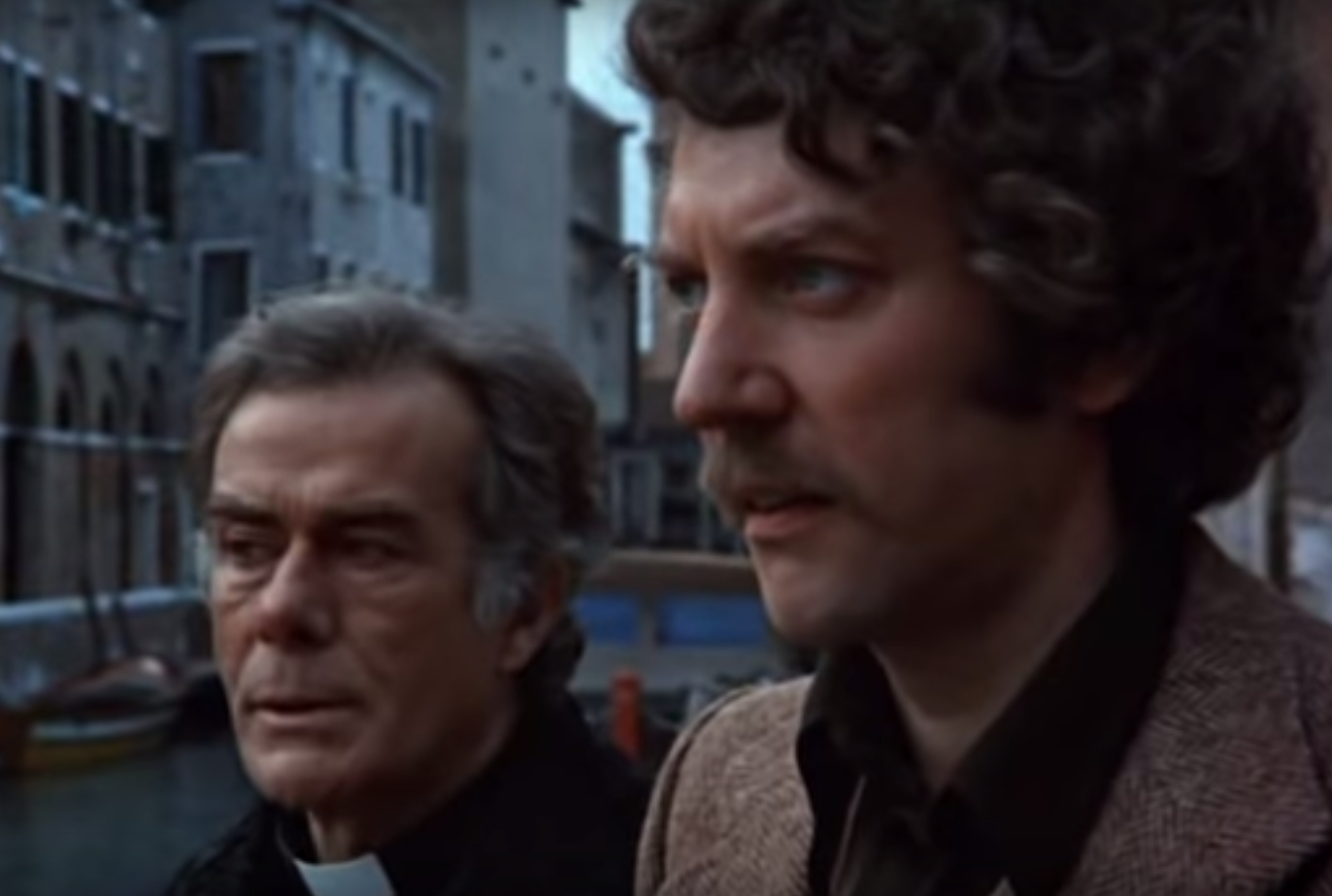Don’t Look Now! It’s The Ghost of Donald Sutherland’s Daughter
One more week has passed, moving us one step closer to that holiest of holidays, the day to which we’re counting towards: Halloween. Last week, we started with the most ubiquitous of horror films in Stanley Kubrick’s adaptation of Stephen King’s “The Shining.”
This week, I’d like to take us down a darker, more abstruse path with a somewhat little-known film by once famed cinematographer turned filmmaker Nicolas Roeg. The film in question is the Donald Sutherland-Julie Christie starring psychological horror film “Don’t Look Now.”

Now, if you’re saying to yourself, “I’ve never heard of this movie, why should I care?” I have one thing to share with you: this movie has one of the most frightening, surprising, goosebump-inducing endings in horror movie history.
In fact, despite its relative obscurity, the moment in question ranked number 22 on Bravo’s list of “100 Scariest Movie Moments,” beating out scenes from “Pet Sematary,” “Rosemary’s Baby” and “Nosferatu.”
Now, I’ll be honest, I picked this film because it is one of my favorites. It’s beautifully filmed; Roeg, the film’s director, cut his teeth as a cinematographer for the likes of famed “bad filmmaker,” Roger Corman’s Edgar Allan Poe adaptation, “The Masque of the Red Death.”
But Roeg also worked on films by the likes of François Truffaut and David Lean, the latter of which was as a camera operator for “Lawrence of Arabia,” a movie that is noted as being one of the most beautifully photographed films of all-time.
Beyond that, “Don’t Look Now” is also an incredibly influential film in the genre, as many of its elements can be found in later horror films. For instance, the film begins with Donald Sutherland and Julie Christie’s daughter wearing a red raincoat and drowning in the pond at their residence as they sit inside, working.
This “red equals danger” motif plays throughout the movie as Donald Sutherland’s character takes a job restoring a church in the water-centric city of Venice, Italy. While in the background, a serial killer stalks the streets.
It’s at this point that Sutherland’s character begins seeing a small figure in a raincoat, accompanied by a haunting score making its way through the city, but no matter how hard he tries, he can’t catch up with the figure.
This “red equals danger” motif comes up in later films, not all of which were horror, like “The Sixth Sense,” “Ex Machina,” “Schindler’s List” and even last week’s film, “The Shining,” which applied the color beautifully in a tense bathroom exchange that sets forth the film’s bloody climax.
To be fair, “Don’t Look Now” didn’t invent this sort of coloring technique, but it was one of the first to apply it so effectively. In fact, perhaps the idea can be traced to a film that Roeg served as cinematographer for Corman’s “The Masque of the Red Death.”
In which Vincent Price, in full-on early technicolor glory, appears in full red from head to toe, his face even painted beat red, a hooded personification of death to come for Prince Prospero and his guests cordoned off from the infected citizenry below.
That being said, I’m sure you could pluck out a bevy of instances in other films and tv shows where that red motif plays out as a way of signaling, most often, that danger is afoot.
I would explain what the danger of that red motif equates to in the film, but that would ruin one of the better endings in horror movie history. You’ll just have to watch to find out.
All I can say is that from start to finish, the film is tense. Not in the same sense that a movie like “Wait Until Dark” is, wherein terror literally leaps from out of every dark corner, but in a more complex emotional way.
After all, the film begins with the death of the two main characters’ daughter, and from there it lays, much like “Hereditary” or “The Babadook” in that bed of sadness until the film’s skin-peeler of an ending.
As I said, it’s one of my favorites and it’s because of its beauty and its ability to sink its horror below the surface of superficial jump-scares and cheap tricks. In other words, the horror is more about how death roots itself into us and pulls us apart from the inside.
Well, that’s about all I can say, without ruining large chunks of the movie, so I’ll stop there.
Later, we’ll peer beyond the veil to find out exactly what it is that makes us laugh, in the deep dark beyond the shadows.
Next week, we’ll veer slightly away from “horror,” though we’ll still very much be exploring one of the genre’s oldest tropes; that unearthly being that personified for much of the Western world the face of consumption, a.k.a. tuberculosis.
Richard Foltz
Managing Editor

